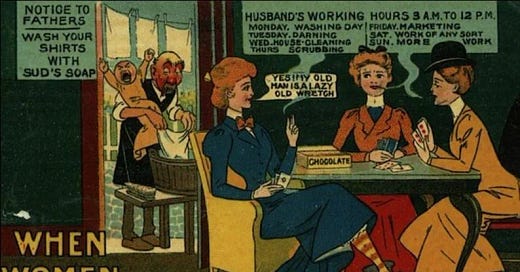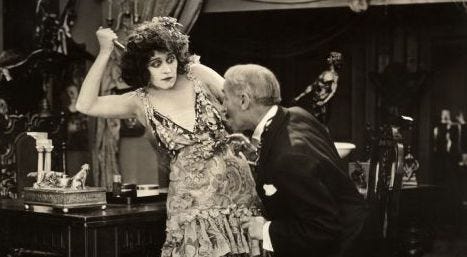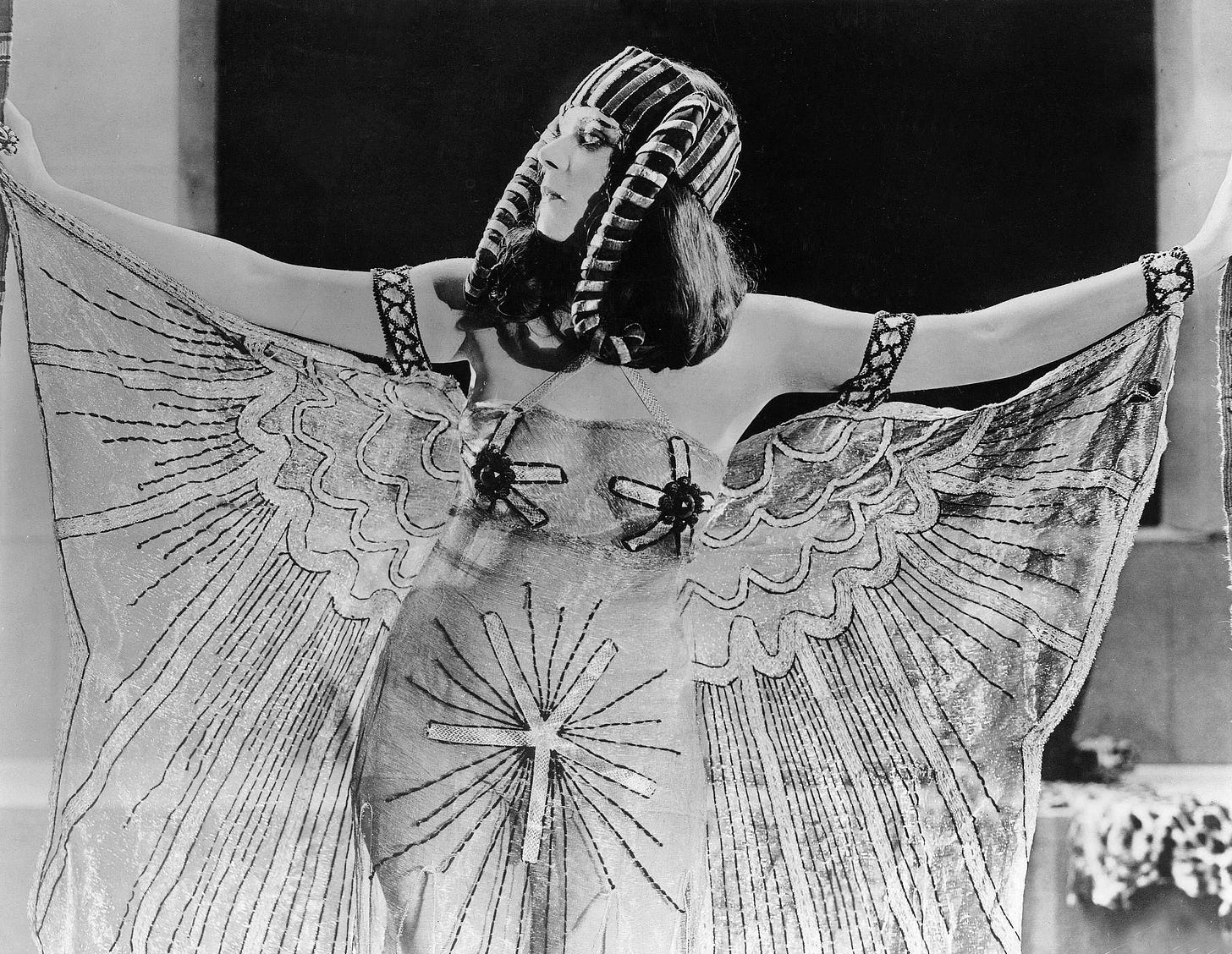Feminists have argued for decades about whether the vamp was an early girl power heroine or a misogynistic caricature.
I think the answer is a bit of both, but I tend to come down slightly more on the side of girl power. Mostly ‘cause it’s more fun.
The basic plot for every vamp film is woman is sexy; men die. I don’t know if they were confusing women with Black Widow spiders, but as a genre, it was pretty insistent that women initiating sexy times is fatal for men. Literally. Sometimes she murders the guy, but a lot of the time he just expires post-seduction, for… reasons best known to himself. My favourite description of the genre (though I can’t remember where I read it!) was: a woman with no soul, and a guy with no chance.
The original idea may well have been anti-suffragette/anti-flapper propaganda. You could definitely see the Vamp as a dire warning of the destruction and general death that would come about if women were to be independent and sexually autonomous. Media at the time was rife with very reasonable, non-dramatic posters like this:
Many decades before Bobby Ewing stepped out that shower, Vamp films were very fond of the it was all a dream trope.
The Vamp would do all her mayhem, then at the last moment would wake from her terrible dream, mortified and relieved to still be pure and innocent after all. Often, this technique was used to get around state censor boards: there would be an ending filmed with the Vamp laughing evilly over the body of her lover/victim, and an alternate version with two extra minutes of her waking up horrified by her own subconscious. Strict states would get the dream one, and more lenient states would get the evil laugh one.
However, I suspect the dream endings were often intended as warnings to any young women in the audience thinking of engaging in a spot of sinning.
Look how relieved she is it’s not true! Aren’t you glad you haven’t done whatever it is you’re thinking about doing?!
But on the other hand — the Vamp had fun.
Bear in mind that the trend got underway at a time when women were barely allowed to leave their homes without a chaperone. Imagine your only option in life being to sit around (literally or metaphorically depending on your class) until somebody selected you as his wife. Being “courted” sounds very romantic until you notice that women are the object of the sentence. You didn’t yet have the right to vote, to control your own money, and once you did get married, there was little you could do to prevent yourself from being pregnant continually from then till menopause.
Now picture going to the movies and watching a young woman just like you, except she’s out in the world, seducing and manipulating and generally having power over all those around her…
Wouldn’t you be a bit thrilled?
You might not want to literally emulate her with all the murder and all, but it must have been amazing to see.
The vamp actresses — most notably the vamp, Theda Bara — are clearly having a ball on screen, camping it up wildly in flowy nighties and enough eyeliner to keep an 80s hair rock band going for years.
We talk a lot about representation is today, how important it is for kids to see people on screen who look like them, doing stuff. I’d argue that the Vamp was the first mainstream example of that for women. Just a couple of years later in the mid/late teens, the Uplift genre appeared, featuring women driving racing cars and flying planes (more on that soon!)… but the Vamp was first.
It might, as you sat in that cinema in 1912 or 1914, even occur to you that if men were going to be dramatic enough to drop dead just because somebody wants to have sex with them, then maybe they shouldn’t be the only sex with the vote?
😎






